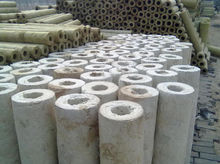
Yingkou Qingying Petrochemical Equipment Co., Ltd
Marketing department: manager Guo
Mobile: 18641771136
Purchasing department: Manager Zhu
Mobile: 13050617889
Address: No. 58, South Binhai Road, Xishi District, Yingkou, Liaoning, China
The rupture of pressure vessels is divided into physical explosion phenomenon and chemical explosion phenomenon. The so-called physical explosion phenomenon is the rapid expansion of the high-pressure gas in the container, releasing the internal energy at a high speed. The chemical explosion phenomenon and the energy released by the chemical reaction at a high speed are often more serious than the physical explosion phenomenon. Hazards when a vessel ruptures are usually as follows: FCC unit
1) Destruction of debris. The reaction force of the gas ejected at high speed pushes the shell in the opposite direction of the rupture. Some enclosures may break into pieces or fly around causing a hazard.
2) Combustion of flammable media and secondary space explosion hazards. After the container containing the combustible gas and liquefied gas is ruptured, the combustible gas mixes with the air, triggering energy (tinder, static electricity, etc.) to burn and explode outside the device, causing a fire accident. Among them, the flammable gas explodes in the outer space of the device, and its harm is more serious. The explosive combustion zone of the gas mixture after gasification of liquid hydrocarbons can be 60,000 times the original volume. For example, after the rupture of a spherical tank filled with 1600m3 of ethylene, the scope of the combustion zone is 700m in diameter and 350m in height. The shock wave of its secondary space explosion can reach more than ten kilometers. This hazard is by no means a physical explosion of a steam boiler.

3) Shock wave hazards. When a container ruptures, most of the energy creates a shock wave in addition to tearing the container further and throwing the container or debris out. The shock wave damaged buildings, severely damaged equipment and pipelines, and cracked windows and doors in the transportation sector. The shock wave is as harmful as the debris, and the surrounding people are injured and killed.
4) Poisoning by toxic media. If a container containing toxic media ruptures, a large toxic area can be created. Toxic liquefied gas evaporates into gas, which is very harmful. Generally, for containers that are cracked at room temperature, the volume of vapor generated by most liquefied gases is about two or three hundred times that of liquids. Liquid ammonia is 240 times, liquid chlorine is 150 times, hydrocyanic acid is 200~370 times, and LPG is about 180~200 times. Toxic gases cause death or severe poisoning of living organisms in a large area. For example, when a ton of liquid chlorine container ruptures, it can lead to a death range of 8.6 x 104 mm and a poisoning range of 5.5 x 106 mm.